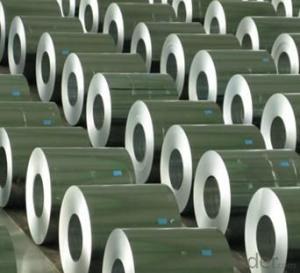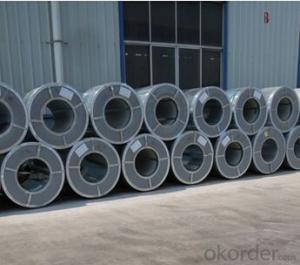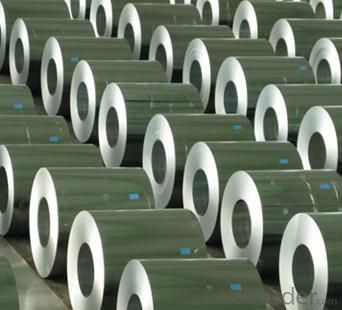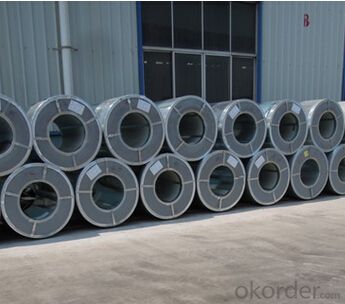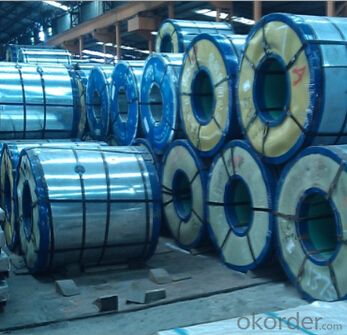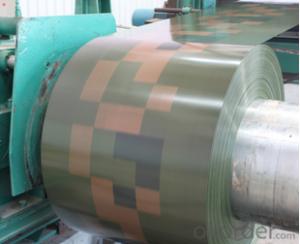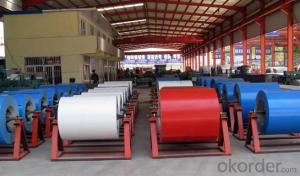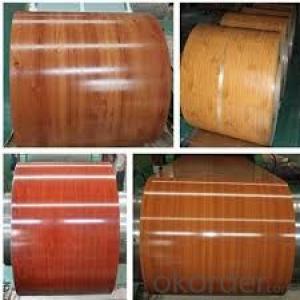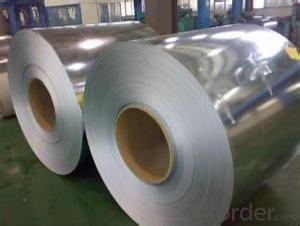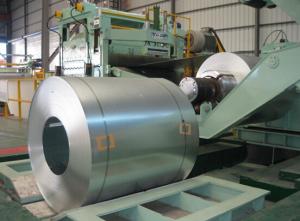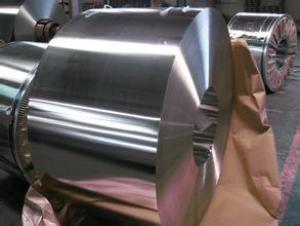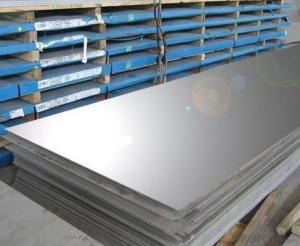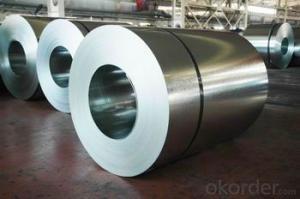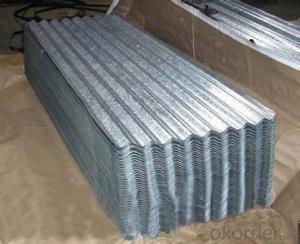Hot-Dip Galvanized Steel Sheets in Coils ASTM
- Loading Port:
- Tianjin
- Payment Terms:
- TT OR LC
- Min Order Qty:
- 25 m.t.
- Supply Capability:
- 50000 m.t./month
OKorder Service Pledge
OKorder Financial Service
You Might Also Like
1.Structure of Hot-Dip Galvanized Steel Sheet in Coils ASTM Description:
Hot-dip galvanized steel coils are available with a pure zinc coating through the hot-dip galvanizing process. It offers the economy, strength and formability of steel combined with the corrosion resistance of zinc. The hot-dip process is the process by which steel gets coated in layers of zinc to protect against rust. It is especially useful for countless outdoor and industrial applications. Production of cold formed corrugated sheets and profiles for roofing, cladding, decking, tiles, sandwich walls, rainwater protective systems, air conditioning duct as well as electrical appliances and engineering.
2.Main Features of the Hot-Dip Galvanized Steel Sheet in Coils ASTM:
• Excellent process capability
• Smooth and flat surface
• Workability, durability
• Excellent anticorrosive property
• High strength
• Good formability
• Good visual effect
3.Hot-Dip Galvanized Steel Sheet in Coils ASTM Images
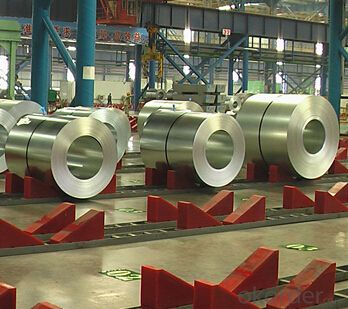
4.Hot-Dip Galvanized Steel Sheet in Coils ASTM Specification
Standard: ASTM, JIS,EN
Grade: CS, DX51D+Z,SGCC, SS 230~550,S220GD+Z~S550GD+Z, SGC340~SGC570
Thickness: 0.1mm~5mm
Width: max 2000mm
Coil weight:3-12 MT
Coil ID:508/610mm
Surface structure: zero spangle, regular spangle or minimum spangle
Surface treatment: Chromate treatment, Oiled/dry, skinpassed/non-skinpassed
Packing: Standard seaworthy export package
Technology test results:
Processability | Yield strength | Tensile strength | Elongation % | 180°cold-bending |
Common PV | - | 270-500 | - | d=0,intact,no zinc removal |
Mechanical interlocking JY | - | 270-500 | - | d=0,intact,no zinc removal |
Structure JG | >=240 | >=370 | >=18 | d=0,intact,no zinc removal |
Deep drawn SC | - | 270-380 | >=30 | d=0,intact,no zinc removal |
EDDQ SC | - | 270-380 | >=30 | d=0,intact,no zinc removal |
5.FAQ of Hot-Dip Galvanized Steel Sheet in Coils ASTM
We have organized several common questions for our clients,may help you sincerely:
1.How about your company?
A world class manufacturer & supplier of castings forging in carbon steel and alloy steel,is one of the large-scale professional investment casting production bases in China,consisting of both casting foundry forging and machining factory. Annually more than 8000 tons Precision casting and forging parts are exported to markets in Europe,America and Japan. OEM casting and forging service available according to customer’s requirements.
2.How to guarantee the quality of the products?
We have established the international advanced quality management system,every link from raw material to final product we have strict quality test;We resolutely put an end to unqualified products flowing into the market. At the same time, we will provide necessary follow-up service assurance.
3. How long can we receive the product after purchase?
Usually within thirty working days after receiving buyer’s advance payment or LC. We will arrange the factory manufacturing as soon as possible. The cargo readiness usually takes 15-30 days, but the shipment will depend on the vessel situation.
- Q: How is steel sustainable as a building material?How is wood sustainable as a building material?
- Of course wood+1
- Q: What are the different coil cutting methods used for steel coils?
- Various methods are commonly employed for cutting steel coils, each boasting its own unique advantages and applications. Among these techniques are shearing, slitting, and laser cutting. 1. Shearing: By applying substantial force to a set of blades, shearing effectively slices through steel coils in a straight line. This method is highly suitable for reducing the size of thick steel coils into more manageable dimensions. Not only is shearing cost-effective, but it is also well-suited for high-volume production. 2. Slitting: Slitting involves the process of dividing a wide coil into multiple narrower strips. This approach is frequently utilized for steel coils that require various widths, such as those used in the fabrication of automotive components, construction materials, and electrical appliances. Slitting machines utilize circular knives to execute precise cuts, ensuring minimal material loss and achieving high levels of accuracy. 3. Laser cutting: Laser cutting represents a more advanced technique wherein a high-powered laser beam is employed to sever steel coils. This method provides exceptional precision, allowing for intricate designs and complex shapes to be effortlessly cut. Laser cutting is particularly suitable for steel coils of thin to medium thickness and is frequently employed in industries that demand superior cuts, such as automotive, aerospace, and electronics. Each of these coil cutting methods possesses unique merits and is selected based on the specific requirements of the steel coils being processed. Factors including coil thickness, desired accuracy, production volume, and the complexity of required cuts are all taken into consideration when determining the most appropriate cutting method.
- Q: How is the thickness of a steel coil measured?
- The thickness of a steel coil is typically measured using a tool called a thickness gauge, which is capable of accurately determining the thickness of the steel through direct contact.
- Q: How do steel coils contribute to sustainability in construction?
- Steel coils contribute to sustainability in construction in several ways. Firstly, steel is a highly durable material that has a long lifespan. Steel coils are used in the construction of various structural components like beams, columns, and frames, ensuring the stability and strength of buildings. By using steel coils, the resulting structures require less maintenance and have a longer service life, reducing the need for frequent repairs or replacements. This durability enhances the sustainability of construction projects by reducing the overall environmental impact associated with material waste and energy consumption. Secondly, steel is a highly recyclable material. Steel coils can be easily recycled and reused in new construction projects. The recycling process of steel has a significantly lower environmental impact compared to the production of new steel. Recycling steel coils helps to conserve natural resources, reduce the extraction of raw materials, and minimize energy consumption in steel production. By incorporating recycled steel coils into construction projects, the demand for new steel production is reduced, resulting in lower greenhouse gas emissions and a smaller carbon footprint. Furthermore, steel is a material that can be prefabricated off-site. This means that steel coils can be manufactured in factories in a controlled environment, minimizing construction waste and improving construction efficiency. Prefabricating steel coils reduces the amount of material waste generated on-site and decreases the need for transportation of construction materials, thereby reducing air pollution and energy consumption during construction. Additionally, steel is known for its high strength-to-weight ratio, which allows for lighter and more efficient structures. By using steel coils, construction projects can optimize the use of materials, resulting in reduced material consumption and lessening the overall environmental impact. The lightweight nature of steel coils also facilitates easier transportation, reducing fuel consumption and associated emissions during delivery. In summary, steel coils contribute to sustainability in construction through their durability, recyclability, prefabrication capabilities, and high strength-to-weight ratio. By utilizing steel coils, construction projects can minimize waste, conserve resources, reduce energy consumption, and decrease the environmental impact, ultimately promoting a more sustainable built environment.
- Q: I have two theories, which one's correct?My book says that steel is made up of 98% iron and 2% carbon.98% of iron's molar mass (55.85 g/mol) is 54.733.2% of carbon's molar mass (12.01 g/mol) is .2402.If you add them up that gives you that steel has a molar mass of 54.97 g/mol.However, steel's chemical formula is Fe(3)CThat would make it's molar mass 179.56 g/mol.( Because 3(55.85) + 12.01 = 179.56 )Which one is correct?
- Molar Mass Steel
- Q: How are defects in steel coils repaired?
- Defects in steel coils are repaired through various methods depending on the type and severity of the defect. Common repair techniques include grinding, welding, soldering, or using heat treatment processes to correct the defects. The specific approach is determined by professionals after assessing the nature of the defect and considering the desired quality and performance standards of the steel coils.
- Q: Theirs this two handed chinese sword on amazon with a forged combat steel blade and i was wandering if it means combat steel in the same sense that tempered carbon steel can be used?
- Combat steel? No such thing... Combat steel is a commercial product... not a true type of steel, since there is no ASTM grade of combat steel... And carbon steel is a WHOLE list of different types of steel, whether it's tempered or not... The company does not provide what steel specifications it has other than combat steel... So my best guess is that it's an alloy of 1095 or 301 spring tempered... both are resilient to snapping and fatigue, and common in modern swords... however, they do not hold an edge very well and are prone to rusting...
- Q: I am trying to make a homemade fender eliminator for my motorcycle and the instructions from the site I found said to use 22 gage weld steel. I went to lowes and all they had was 26 gage sheet metal. What is the difference between the two? Is weld steel less flexible?
- galvanized steel gives off poisonous fumes when you weld it
- Q: We are going to build a house with a steel frame.Someone told me today that these houses have problems with humidity.Is that true?Please tell me all you know..
- The humidity is not at all related to the framework of any house. Galvanized steel has become popular especially in commercial applications because lumber costs are increasing exponentially. Consider that any home built should be adequately ventilated, insulated, and certainly constructed. Consider where the house is,,,IE: Near water; in a tropical setting; prone to being in an area that floods; or gets a lot of rain. The exterior and interior of a steel framed house is the same as a wood frame. I'd go with block personally and steel roof rafters and joists. Once the house is built, adequate ventilating, heating, and/or air conditioning should be accomplished to keep the humidity levels tolerable, and not effect mold, mildew, excesssive heat, etc. Rev. Steven
- Q: What are the different types of steel coil finishing processes?
- There are several types of steel coil finishing processes, including hot rolling, cold rolling, galvanizing, and coating. Hot rolling involves passing the steel through high temperatures to shape and form it. Cold rolling is a similar process but is done at lower temperatures to improve the steel's surface finish and dimensional accuracy. Galvanizing is a process where a layer of zinc is applied to the steel to protect it from corrosion. Coating processes involve applying a layer of paint or other protective substances to enhance the steel's durability and aesthetics.
Send your message to us
Hot-Dip Galvanized Steel Sheets in Coils ASTM
- Loading Port:
- Tianjin
- Payment Terms:
- TT OR LC
- Min Order Qty:
- 25 m.t.
- Supply Capability:
- 50000 m.t./month
OKorder Service Pledge
OKorder Financial Service
Similar products
Hot products
Hot Searches
Related keywords
